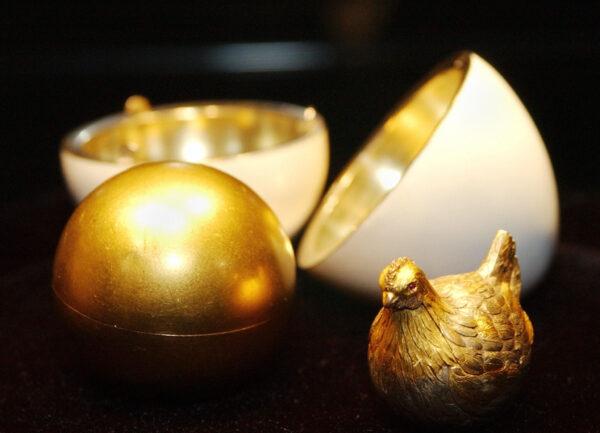In 1885, Czar Alexander III gave his wife, Empress Maria Feodorovna, a most extraordinary Easter gift: a white enamel “Hen Egg.” The unassuming egg opened to reveal a golden yolk, within which was a gold enameled hen. Hidden inside the hen was another surprise—an imperial crown with a ruby pendant.

The Hen Egg, the first imperial egg presented by Czar Alexander III to his wife, Empress Maria Feodorovna, at Easter, 1885. Stan Honda/AFP via Getty Images






